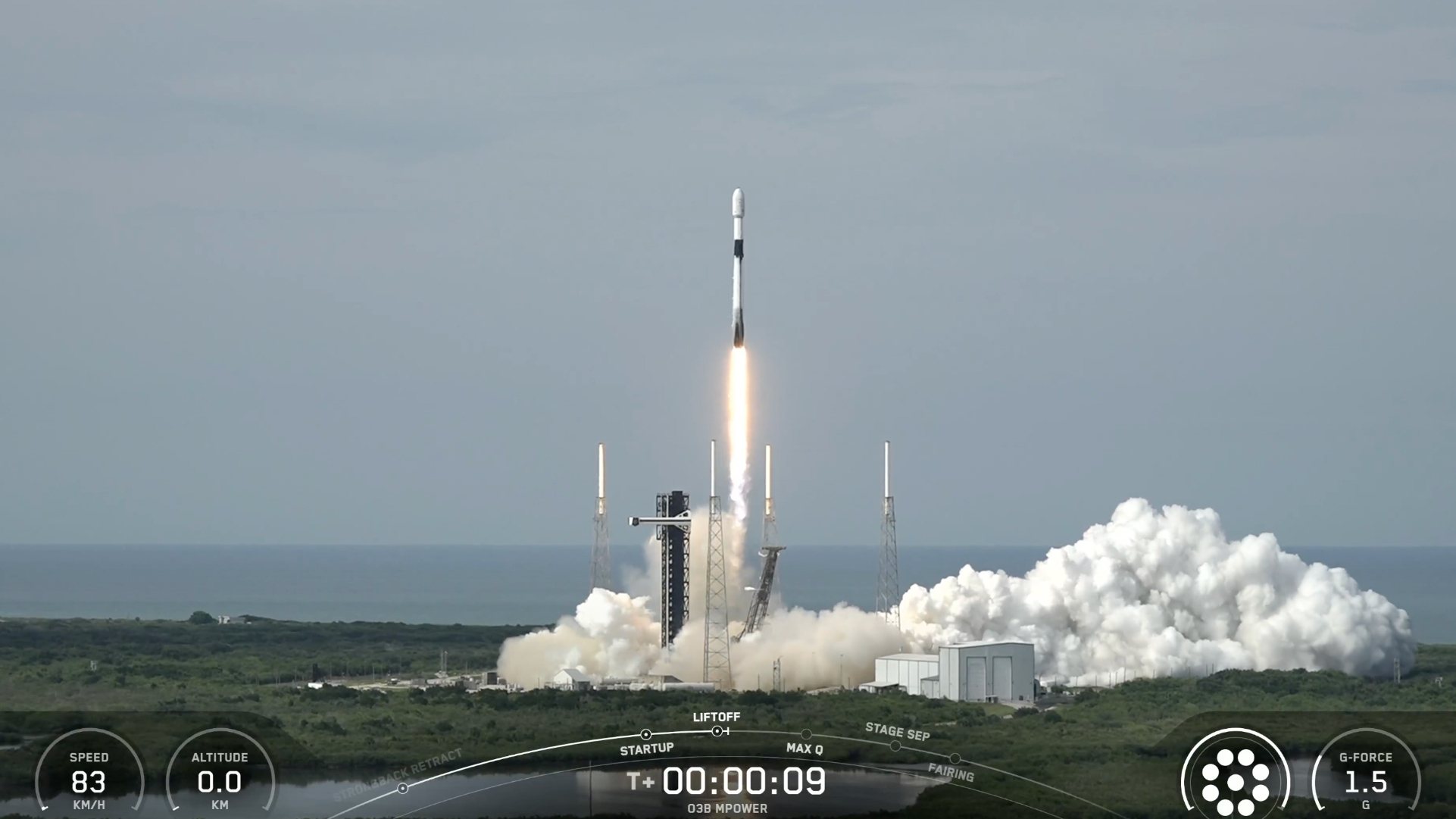Key Takeaways
- SpaceX successfully launched its Falcon 9 rocket on July 22, carrying two SES O3b mPOWER satellites.
- The rocket’s first stage completed a successful landing on the droneship “Just Read the Instructions” in the Atlantic Ocean.
- This launch is part of SES’s ongoing expansion of their mPOWER communications constellation, which aims to reach a total of 13 satellites.
Launch Details
On July 22, 2025, a SpaceX Falcon 9 rocket successfully lifted off from Cape Canaveral Space Force Station in Florida at 5:12 p.m. EDT. The mission was to deploy two powerful communications satellites, SES’ O3b mPOWER 9 and 10, into medium Earth orbit (MEO) at approximately 5,000 miles (8,000 kilometers) above Earth. This launch was delayed by one day after an aborted attempt on July 21, when the company halted the countdown 11 seconds before liftoff for unspecified reasons.
The first stage of the Falcon 9 rocket executed a flawless landing on the droneship “Just Read the Instructions” about 8.5 minutes post-launch. This particular booster, designated B1090, has now completed six successful missions. Following the first stage’s landing, the upper stage of the Falcon 9 was scheduled to deploy the two satellites into MEO approximately two hours after liftoff.
About the O3b mPOWER Satellites
SES’s mPOWER satellite constellation currently includes eight high-throughput satellites launched across four Falcon 9 missions between December 2022 and December 2024. The mPOWER system is operational, delivering internet services globally, and is set to expand to a total of 13 satellites. Each satellite, manufactured by Boeing, weighs about 3,750 pounds (1,700 kilograms). According to SES representatives, the remaining three satellites are currently in production and are expected to be launched within the next 12 months.
This launch marked the 89th Falcon mission for SpaceX in 2025 and complements the three test flights of the Starship megarocket that occurred earlier this year in January, March, and May. As SpaceX continues to expand its launch capabilities, the successful deployment of the SES satellites underscores the growing importance of satellite-based communications in today’s interconnected world.
The content above is a summary. For more details, see the source article.















